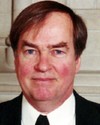Mr. Speaker, I am pleased to rise in this debate. I think the role of the Canadian government, at least these past few years, in supporting the defence forces has been not brilliant but very good at the very least.
I would like to direct my remarks primarily toward the reserves because I am very interested in the whole issue of the reserves. My riding is Wentworth—Burlington, but close to my riding in Hamilton there are two major reserve battalions of great historic fame, the Royal Hamilton Light Infantry and the Argyle and Sutherland Highlanders.
Just two weeks ago the member for Burlington and I went on a training exercise with the Argyles at Meaford, the militia support training centre opened in 1995 near the little town of Meaford in the Bruce Peninsula. Note the date, 1995. This is obviously an initiative of this government, not the previous government.
This militia training support base is a part of a series that is to be opened across the country. There is already one that has been opened at Valcartier in Quebec. There is another one to be opened in the west at Waineright ad there are two to be opened at Gagetown and Aldershot in the maritimes.
The theme of these proving grounds is to give Canada's reserve forces an opportunity to train in near combat circumstances. Meaford is a section of ground that was set aside during the second world war for the training of our troops for overseas. It went more or less into mothballs for many years. It was opened 1995 primarily for the use of the militia but also permanent force people train there as well.
It was very interesting. The member for Burlington and I arrived about noon and we were taken on to the proving grounds. There are some very excellent and modern support buildings, barracks for permanent forces primarily but also for militia forces. The area is very large, comprising of a lake, a section of the Niagara escarpment, a lot of brush and mixed countryside. In one section of the proving grounds there is an artillery range.
While we were there we saw artillery being fired. They use live rounds because they want to test the quality of the ammunition.
More important, we went down to where the Argyles were dug in. There were dug in to some terrain facing the mock enemy. The mock enemy were not all that mock. They were U.S. marines from Buffalo who were testing out the Meaford proving grounds. They were the supposed enemy approaching the Canadian militia across about two kilometres of open ground.
It was very interesting. The youngsters who were in the foxholes dug on the side of the hill were men and women who had been recruited from primarily the city of Hamilton and the surrounding area. There they were in foxholes with their primary support weapon, the C6, and a machine gun derived from that in their positions. They were staring across the countryside at the opposing forces that were supposed to be coming.
It was very interesting for me. I have done some research in the past on the military. One of the great dangers of peacetime military is that it might get engaged in buying toys or buying hardware that has political value but little real value in the event of combat.
As a military historian, I was most interested to see that these young militia members in their foxholes were armed with something called a C6, an automatic fire weapon that fires bullets of about .25 in calibre. It is actually measured in millimetres but I can never get the metric straight. It is half the weight of the bullet that would be carried in a normal AK47 or M30 or whatever it is the Americans use.
This weapon was totally without class. In other words, I cannot imagine gun dealers across the world wanting to acquire this weapon. It is manufactured in Canada. We started manufacturing it in Canada for Canadian forces only four or five years ago.
It is a superlative firearm. The average soldier can carry twice the amount of ammunition as an opposing soldier carrying one of the more traditional firearms that we would expect in Russian made weapons and certainly NATO made weapons.
We can see that someone in Canadian forces hierarchy is thinking very carefully and is considering the fact that when there are Canadian forces in the field, they want to minimize the weight and maximize the amount of munitions they actually carry.
This was a superb gun as well in the sense that the militia members demonstrated to me and explained that it was a gun that fires dirty. In other words there is not a lot of maintenance. It is extremely reliable.
I thought to myself that there is a lot of intelligence going on somewhere in the Canadian forces brass, in its hierarchy, to come up with a specific firearm for use by the Canadian forces and which is unique to the Canadian forces.
Provided that we do not have a repeat of the catastrophe that occurred in the first world war with the Ross rifle. I do not know whether many people around here remember Canada's first foray into producing its own—

